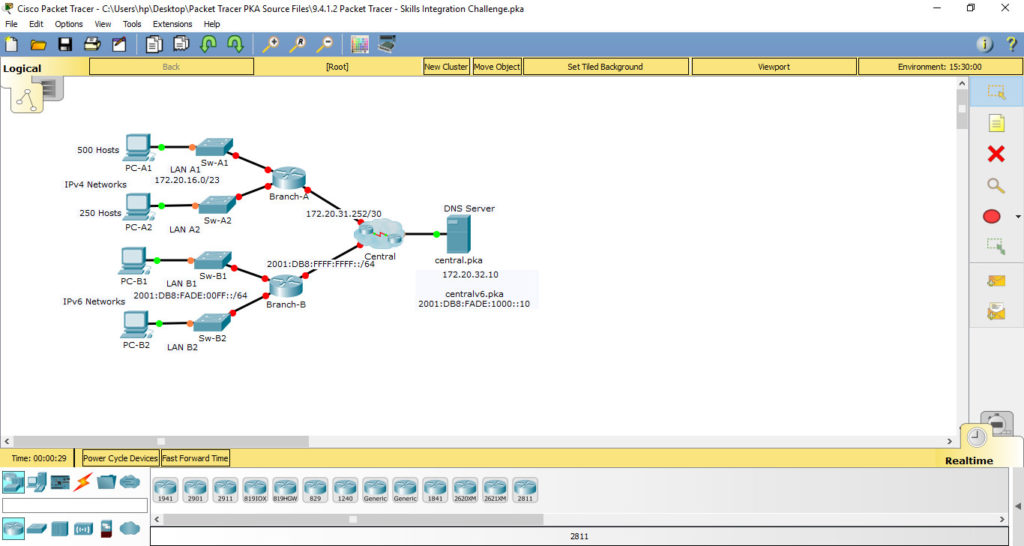
Information listed under the PDU Details is reflective of the layers within the TCP/IP model.
#Packet tracer activity 3.2.4.6 answers mac#
What information is displayed at this layer? Layer 2 Ethernet II Header and inbound and outbound MAC addresses. The HTTP client sends a HTTP request to the server.” What is the text displayed next to the Layer 7 label? HTTP What information is listed in the numbered steps directly below the In Layers and Out Layers boxes? “1. Under the Out Layers column, ensure that the Layer 7 box is highlighted. Ensure that the OSI Model tab is selected.When an event is the last event in the stream of traffic, only the OSI Model and Inbound PDU Details tabs are displayed. As more events are examined, there will be three tabs displayed, adding a tab for Inbound PDU Details. In this window, there are only two tabs ( OSI Model and Outbound PDU Details) because this is the start of the transmission. The PDU Information at Device: Web Client window displays. It may be necessary to expand the Simulation Panel or use the scrollbar directly below the Event List. Click the first colored square box under the Event List > Info column.Step 3: Explore the contents of the HTTP packet. The web page was returned from the web server. There should be four events in the Event List. Because time in Simulation mode is event-driven, you must use the Capture/Forward button to display network events. Click the Desktop tab and click the Web Browser icon to open it.The panels can be adjusted in size by hovering next to the scroll bar and dragging left or right when the double-headed arrow appears. Note: The Web Server and Web Client are displayed in the left pane.

The Info column is used to inspect the contents of a particular event. As traffic is generated and stepped through, events appear in the list. There are six columns listed across the top of the Event List within the Simulation Panel. The Visible Events should now only display HTTP.Ĭurrently the Simulation Panel is empty. Click anywhere outside of the Edit Filters box to hide it.

In Simulation mode, packets are displayed as animated envelopes, time is event driven, and the user can step through networking events. However, a powerful feature of Packet Tracer allows the user to “stop time” by switching to Simulation mode. PT always starts in Realtime mode, in which networking protocols operate with realistic timings. In the lower right corner of the Packet Tracer interface are tabs to toggle between Realtime and Simulation mode. Step 1: Switch from Realtime to Simulation mode. In Part 1 of this activity, you will use Packet Tracer (PT) Simulation mode to generate web traffic and examine HTTP. The following steps lead the user through the process of requesting a web page from a web server by using the web browser application available on a client PC.Įven though much of the information displayed will be discussed in more detail later, this is an opportunity to explore the functionality of Packet Tracer and be able to visualize the encapsulation process. Packet Tracer simulation mode enables you to view each of the layers and the associated PDU. Each piece is assigned a specific name (protocol data unit ) and associated with a specific layer of the TCP/IP and OSI models. Simulation mode allows you to view the data contents being sent across the network at each layer.Īs data moves through the network, it is broken down into smaller pieces and identified so that the pieces can be put back together when they arrive at the destination. This simulation activity is intended to provide a foundation for understanding the TCP/IP protocol suite and the relationship to the OSI model.


 0 kommentar(er)
0 kommentar(er)
